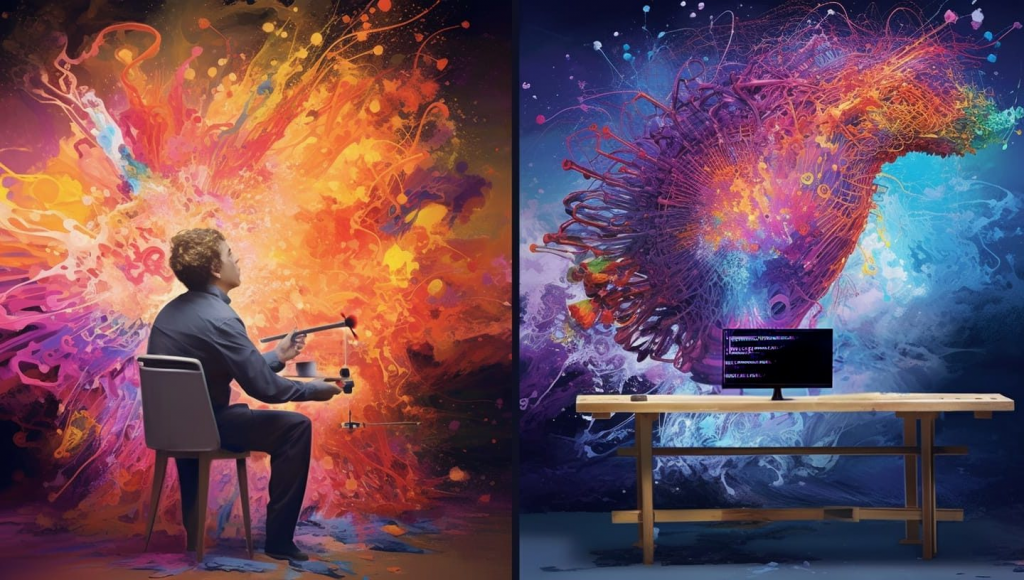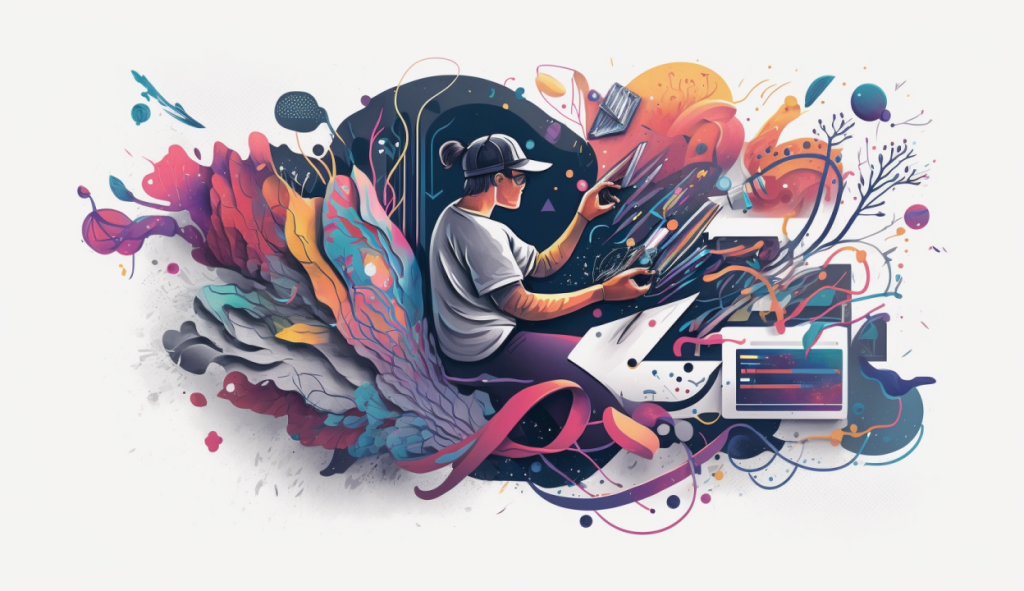The Intersection of AI and Creativity: Can Machines Be Artists?

Artificial Intelligence (AI) has made significant strides in various fields, from healthcare to finance, and now it is increasingly making its presence felt in the realm of creative arts. This intersection of AI and creativity is not only fascinating but also raises profound philosophical questions about the nature of art, creativity, and the role of machines in human society. In this blog, we will explore the capabilities of AI in the creative arts and delve into the philosophical implications of machine-generated art.
The Rise of AI in Creative Arts

AI’s entry into the creative domain has been nothing short of revolutionary. Algorithms and neural networks are now capable of generating music, painting, writing poetry, and even producing films. Some notable examples include:
1. AI in Visual Arts
AI programs like DeepArt and DALL-E have demonstrated the ability to create stunning visual art. DeepArt uses neural networks to transform photos into artwork reminiscent of famous painters, while DALL-E, developed by OpenAI, generates original images from textual descriptions, showcasing an impressive understanding of artistic concepts and styles.
2. AI in Music
AI-driven music composition tools like AIVA (Artificial Intelligence Virtual Artist) and OpenAI’s MuseNet can compose complex and emotive music. These systems analyze vast datasets of music to create original compositions that can mimic the styles of various genres and composers.
3. AI in Literature
AI has also ventured into the literary world. GPT-3, another OpenAI model, can generate coherent and contextually relevant text, producing everything from poetry to short stories. Its ability to understand and mimic human language patterns is a testament to the advancements in natural language processing.
The Capabilities of AI in Art
The capabilities of AI in the creative arts are continually expanding. AI can analyze vast amounts of data, identify patterns, and generate new content based on learned styles and structures. Some key capabilities include:
Imitation and Innovation
AI can imitate existing artistic styles and, in some cases, innovate by combining elements from different styles to create something entirely new. This ability to blend and create hybrid forms of art demonstrates a level of creativity that challenges traditional notions of artistic creation.
Efficiency and Precision
AI can produce art with remarkable efficiency and precision. Tasks that might take human artists weeks or months can be completed by AI in a matter of hours. This efficiency opens up new possibilities for creative projects, especially those with tight deadlines or large-scale requirements.
Accessibility
AI democratizes creativity by making artistic tools accessible to a broader audience. Even individuals without formal training in the arts can use AI-powered tools to create high-quality artwork, music, and literature, thereby expanding the creative community.
Philosophical Questions Raised by AI-Generated Art
The advent of AI in the creative arts raises several philosophical questions about the nature of art and creativity:
What is Creativity?
Traditionally, creativity has been viewed as a uniquely human trait involving imagination, emotional depth, and personal expression. AI’s ability to generate art challenges this notion and prompts us to reconsider what constitutes creativity. Is creativity solely the product of human consciousness, or can it emerge from algorithmic processes?
Can Machines Be Artists?
The question of whether machines can be considered artists is deeply philosophical. While AI can produce art, it lacks consciousness, emotions, and personal experiences, which are often seen as integral to artistic creation. Can we attribute the title of “artist” to an entity that operates without awareness or intent?
The Value of AI-Generated Art
The value of art is often linked to the intention and emotional connection of the artist. AI-generated art, created without personal intent or emotion, challenges traditional criteria for valuing art. How should we assess the aesthetic and cultural value of art created by machines?
The Role of the Human Artist
As AI takes on more creative tasks, the role of the human artist may evolve. Artists might become curators, collaborators, or directors of AI tools, guiding and shaping the creative output. This shift raises questions about the future of artistic professions and the human element in art.
Conclusion
The intersection of AI and creativity is a burgeoning field that offers exciting possibilities and deep philosophical questions. AI’s capabilities in the creative arts are expanding, challenging our understanding of creativity, art, and the role of technology in human culture. As we navigate this new landscape, it is crucial to reflect on the implications of AI-generated art and consider how we value and define artistic expression in an era where machines can create.
Ultimately, while AI may never fully replicate the human experience, its contributions to the arts can enhance and expand our creative horizons, offering new tools and perspectives for both artists and audiences. The future of art, enriched by AI, promises to be a dynamic and evolving tapestry of human and machine collaboration.